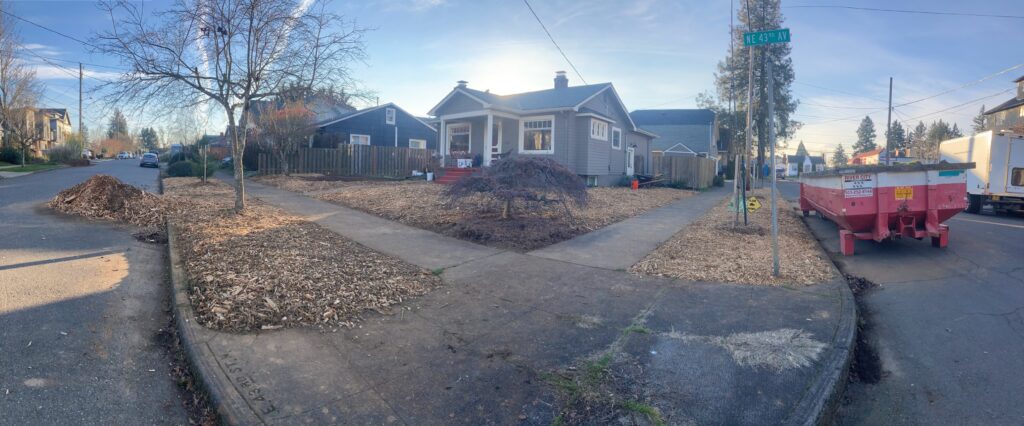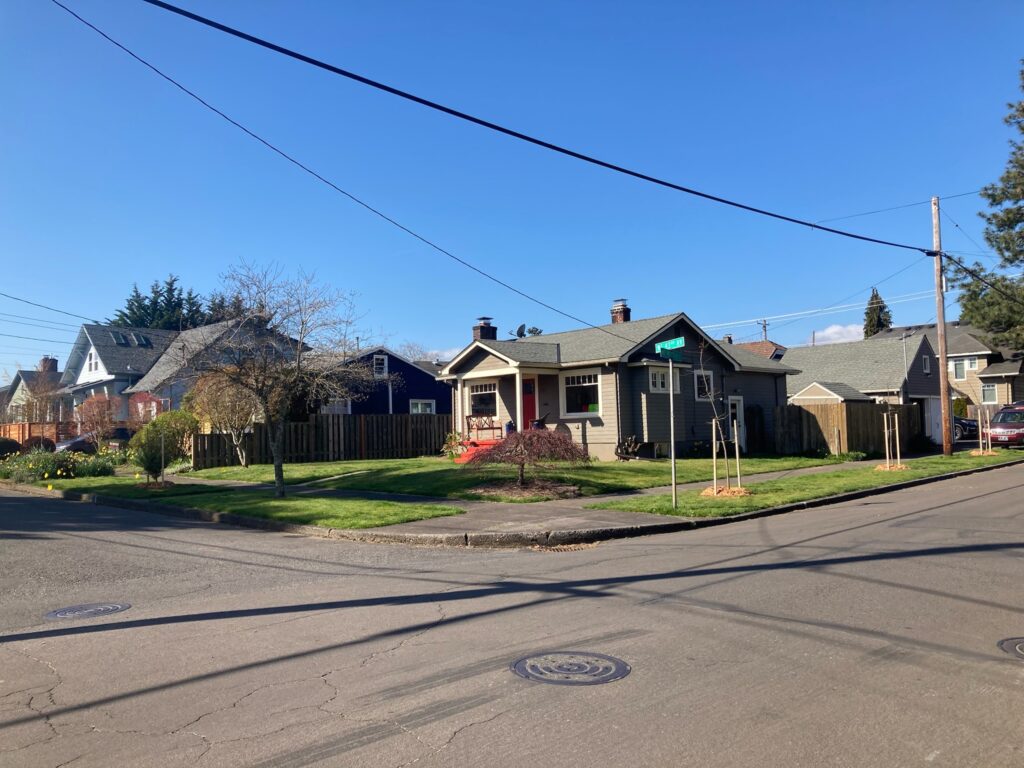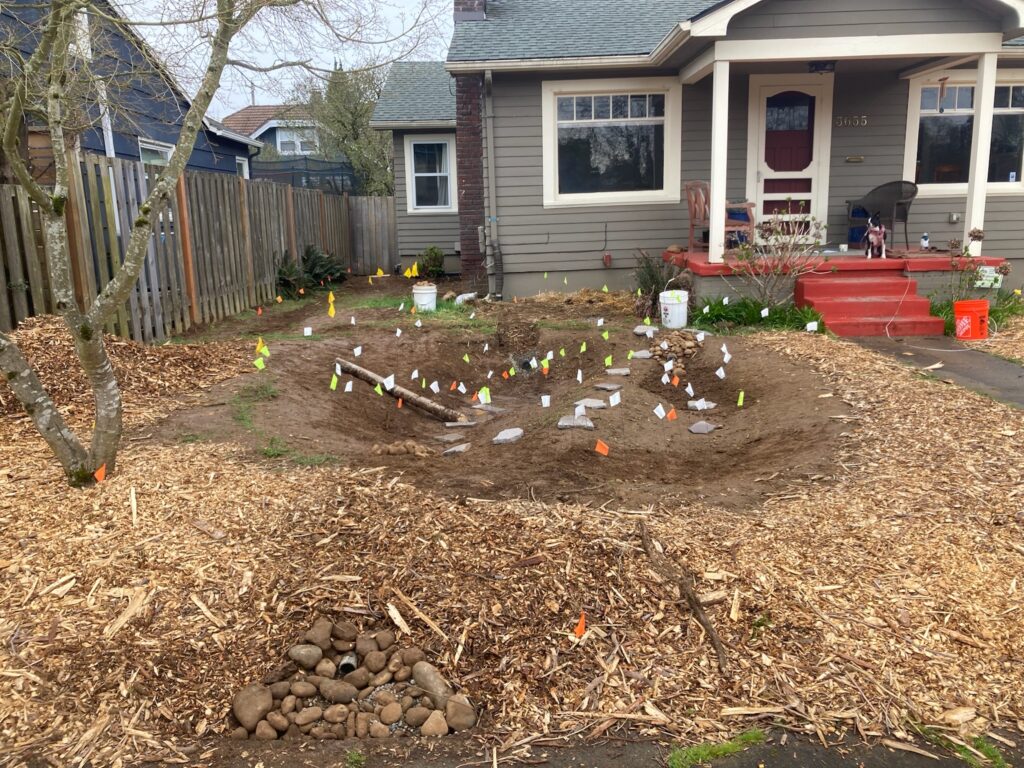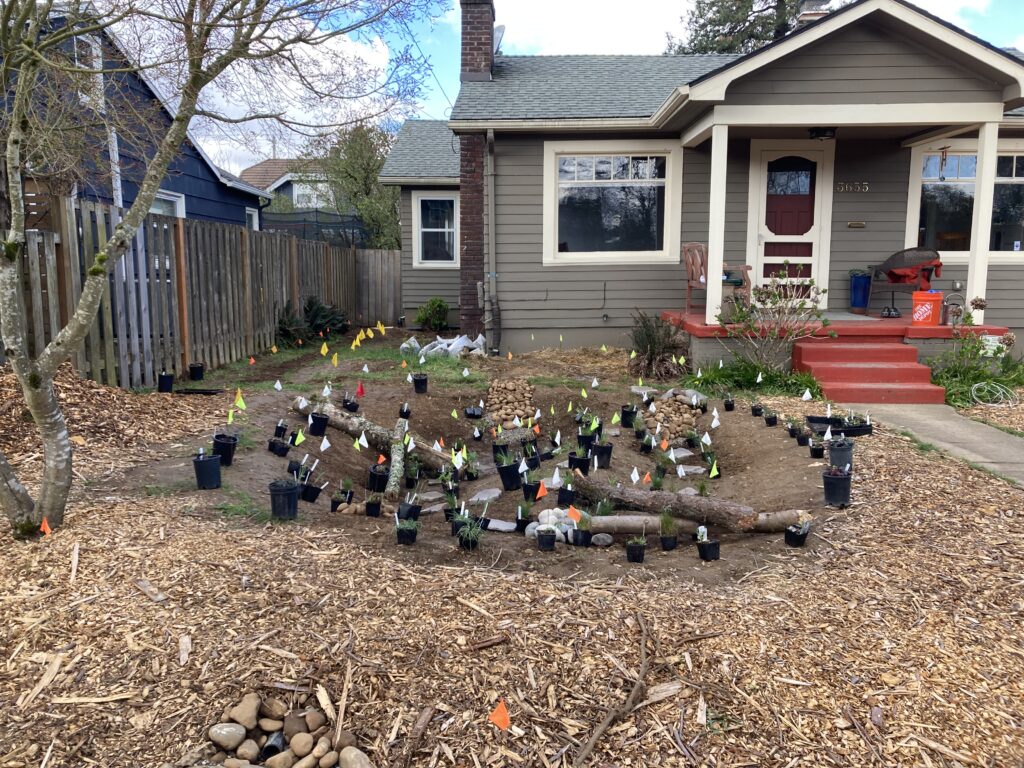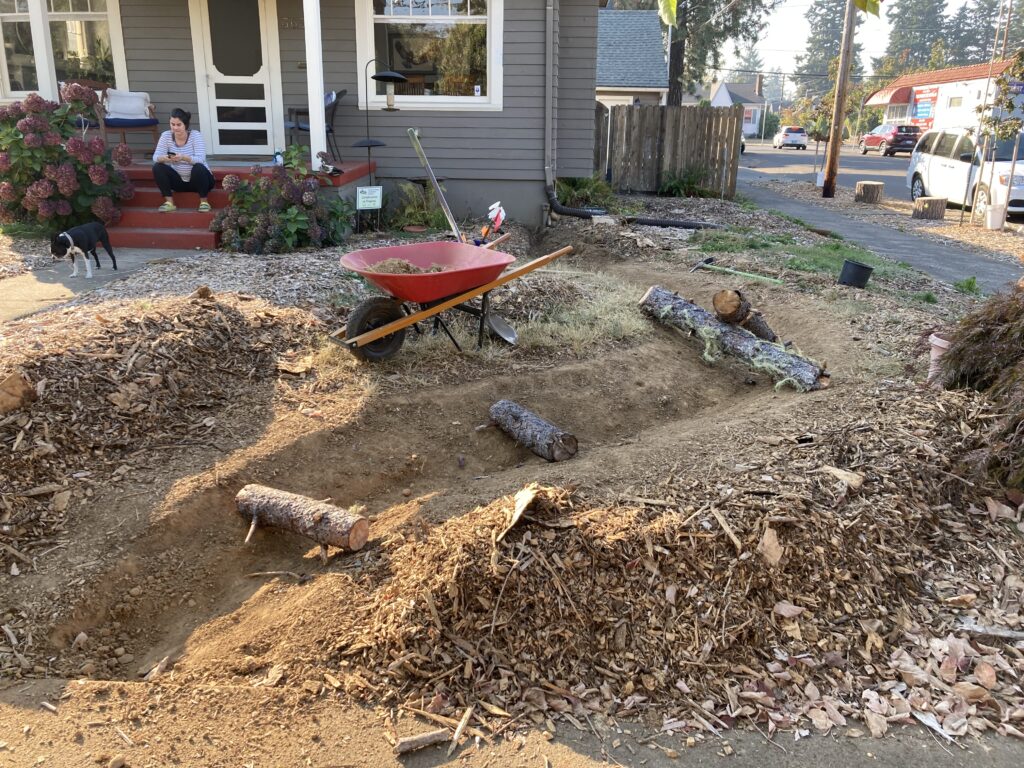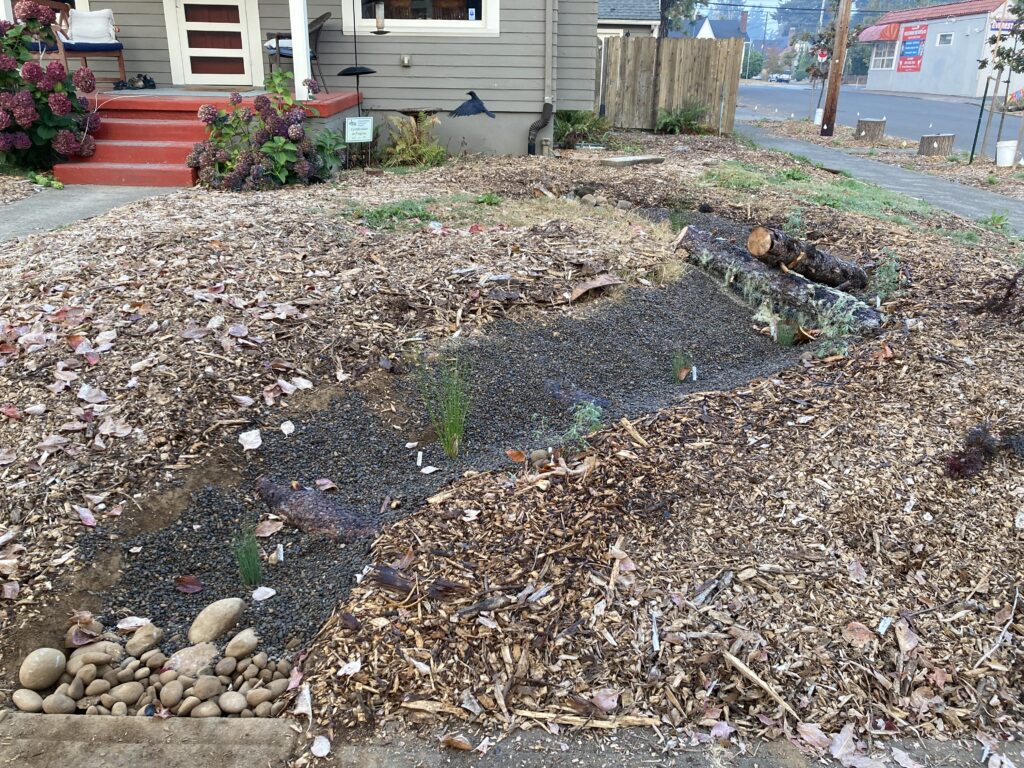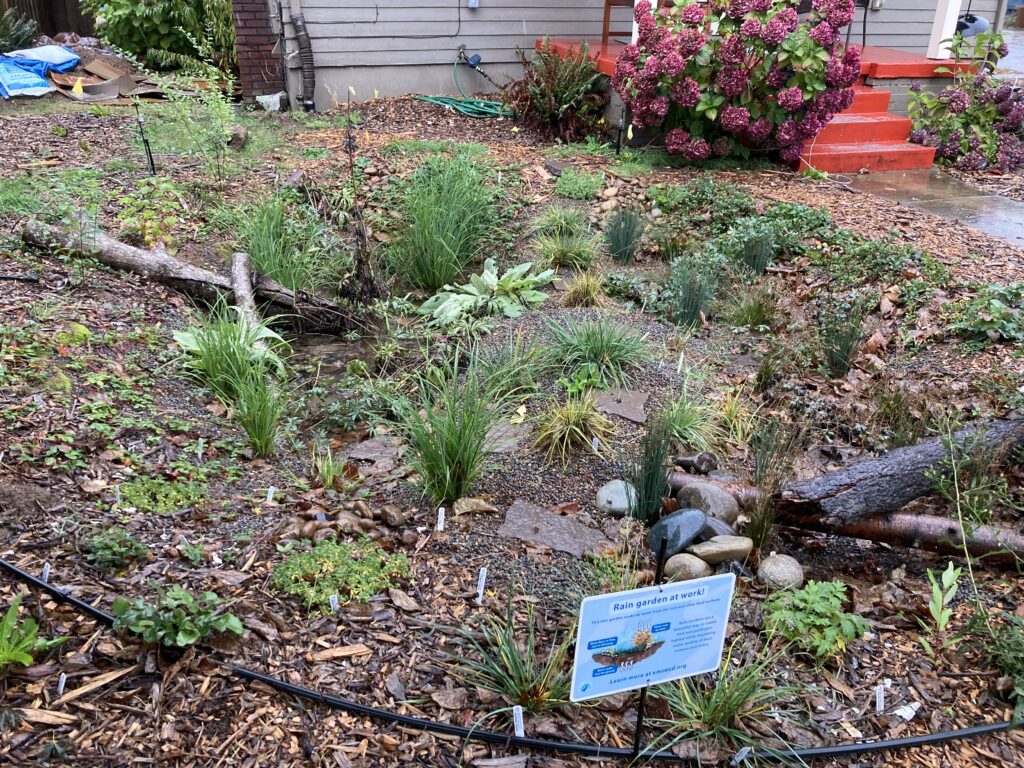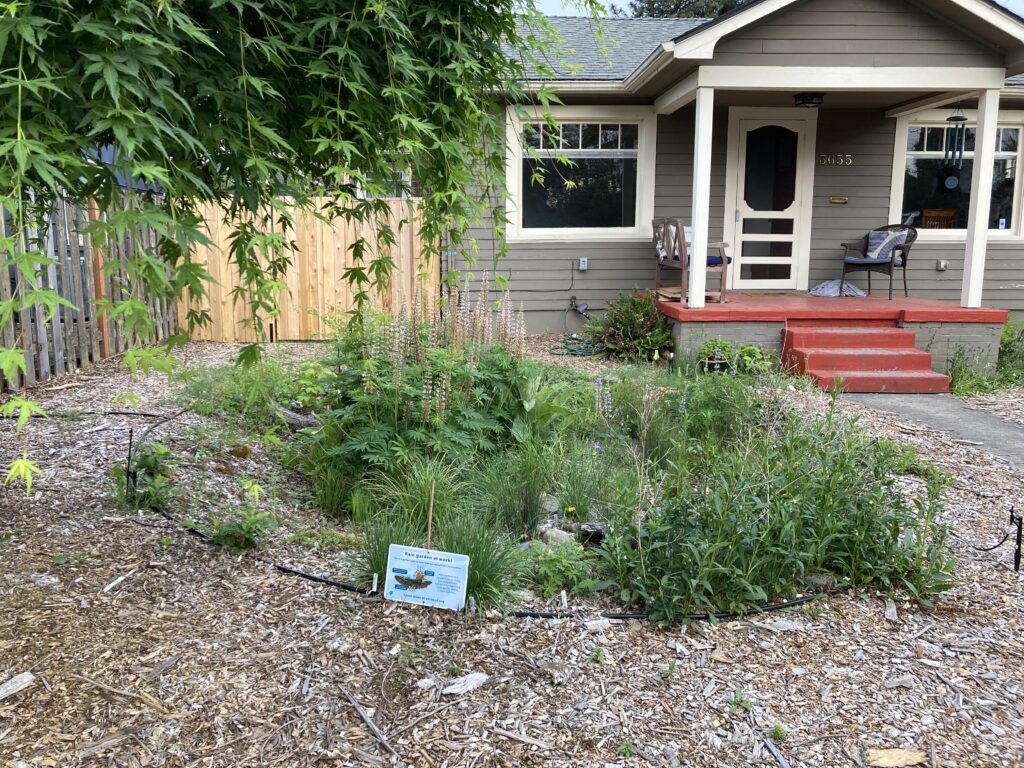Site Information: Located in the Beaumont-Wilshire neighborhood, with full sun, part sun, shade, dry, and moist areas.
What inspired you to enroll in the Backyard Habitat Certification Program?
This is the second time we’ve participated in the program. We were excited to take lessons learned from our first certified yard (silver) and apply them to a new project here.
How would you describe your habitat?
We have completely transformed our traditional 5,000 sq ft city lot into a thriving natural landscape. We feature a rain swale and a large rain garden in the front yard that capture roof runoff. On the north side, there’s an oak-savanna street strip covered in native grasses and large woody debris. Although our backyard feels a bit more traditional (there’s still some grass there), we have added many plantings along the borders for native edging wherever possible.
What are your top three favorite native plants and why do you love them?
- Kinnickinnick – because it’s a great groundcover.
- Douglas aster – because they seem to keep their flowers for so long.
- Large-leaved lupine – because they are so fun to watch as they spring back to life each year, though I wish ours had more colorful flowers to display.
What changes have you observed as a result of creating habitat?
We are located on a corner and see a lot of foot traffic. Many people are curious or excited about what we have been doing, and I enjoy talking with them about how we’ve removed the lawn and designed the rain features. It’s common for us to receive thumbs up from passersby as we look out our front windows. Over the past couple of years, we have had bunnies find shelter in the thick rushes at the bottom of the rain garden and behind our red-flowering currant in the backyard along the fence.
What were the two most significant challenges you encountered while creating habitat, and how did you address them?
We dug the rain and infiltration features by hand, which was a lot of work, as was removing the sod. We used a sod cutter and rented a large roll-off dumpster to haul away excess dirt, but it ended up costing more than we expected. If we did it again, we might rethink the staging process—since we ran out of space to put the dirt, leading to the need for the dumpster—and try to relocate more soil on site, like creating berms in certain areas, instead of hauling it away. Additionally, placing the pipes so they could drain from the back of the house to the rain garden at the front was challenging, given the long distance and need for an adequate slope to ensure good flow.
What resources did you find especially helpful?
- EMSWCD webinars (naturescaping),
- OSU & City of Portland guides for rain gardens,
- there’s also a fun episode of This Old House where they work on a rain garden project right here in Portland!
How do you enjoy your Backyard Habitat throughout the different seasons? What are its highlights in each season?
Spring – This might be the obvious favorite as we’re still getting rain, so the infiltration features are still active, plus the flowers are starting to bloom and the buds are coming out on the trees. Summer – The feeling of having a full and lush landscape is a joy compared to the dull, traditional, and plain lot that it used to be. Fall – We’re getting color on the cascara tree in the backyard, and the dedicated seasonal growth rushes in the breeze. Winter – We’re still enjoying the greenery of the Douglas fir and the sedges and rushes in front, along with the ceanothus out back, plus we highlight the water features with blue lights during our holiday display, which is fun.
What part of your backyard habitat are you most proud of?
It has to be the rain garden, hands down. It took a lot of time, energy, and planning, and we’re really happy with how prominent it has become.
Is there anything else you’d like to add about your journey?
We were fortunate to reach platinum status last year, but it took four years and started with many simple, small actions. We are still a work in progress and are seeking ways to direct 100% of our roof water into our two infiltration systems.
What is one piece of advice you would give new program participants?
Our infiltration features are larger than they need to be, so we would encourage folks not to shy away from creating simple/small infiltration features. Getting your neighbors involved has also been a lot of fun because you can all be on the journey together!
